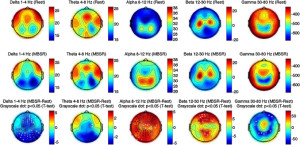
By John M. de Castro, Ph.D.
“What’s encouraging about meditation is that even if we shut down, we can no longer shut down in ignorance. We see very clearly that we’re closing off. That in itself begins to illuminate the darkness of ignorance.” – Pema Chodron
Wisdom is considered to be an extremely desirable characteristic in humans. People who are thought of as wise are revered. People throughout their lives strive for wisdom and hope that they will develop wisdom. Wisdom is thought to endow the individual with the ability to successfully engage with life and conquer its challenges. To some extent, wisdom is considered the pinnacle of human cognitive development. At the same time, most people would be hard pressed to state exactly what it is. This may be why many find it elusive, as it is difficult to find something when it’s not known what is being sought.
In today’s Research News article “The Relationship between Mental and Somatic Practices and Wisdom”
http://journals.plos.org/plosone/article?id=10.1371/journal.pone.0149369
Williams and colleagues describe wisdom as “a unified construct composed of interrelated cognitive, reflective, and affective characteristics. In this model, wisdom is characterized as a deep and accurate perception of reality, in which insight into human nature and a diminished self-centeredness are acquired through life experience and practice in perspective taking.”
This description of wisdom indicates that there are a number of different components and capacities that go into wisdom. Firstly, it states that it is acquired through life experiences. As such, it involves learning ability. Next it states that it is a “deep and accurate perception of reality.” This involves cognitive capacities, thinking, and the ability to see things as they are. It involves “diminished self-centeredness” which involves the development of compassion and empathy for others. Finally, it “insight into human nature.” This involves reflective ability to look inside oneself and objectively observe and determine what are the true characteristics being human.
It would appear to be a daunting challenge, then to acquire wisdom. But, there may be help. Contemplative practices have been shown to improve virtually all of the capacities that lead to wisdom. In particular, contemplative practices improve learning ability, cognition, compassion and empathy, self-awareness, and regulate emotions. Hence, it would seem that engaging in contemplative practices would develop wisdom. This is exactly what the Buddha promised about 2500 year ago, that meditation and contemplation would led to wisdom.
Williams and colleagues investigated the relationship between a number of practices, including meditation, on the development of wisdom. They recruited participants who were meditators, who engaged in somatic practices to develop mindful coordinated movements, and who practiced classical ballet. They recruited and measured participants on-line. They measured wisdom with a survey called the “Three-Dimensional Wisdom Scale.” It is a measure of cognitive, reflective, and affective dimensions of wisdom, with questions such as “A person either knows the answer to a question or he/she doesn’t;” “I try to look at everybody’s side of a disagreement before I make a decision;” and “It’s not really my problem if others are in trouble and need help.”
They found that the meditators had significantly higher wisdom scores than any of the other groups. The years of practice of meditation was found to be significantly, positively related to wisdom and that this relationship was mediated by lower anxiety levels. In other words, the more years of meditation practice, the lower the levels of anxiety, and as a result, the higher the levels of wisdom. These results clearly suggest that the effects of meditation on emotion regulation are key to the development of wisdom.
These results are important and interesting. It makes sense that the ability to regulate emotions would be important for developing wisdom. In order to learn from life experiences, it is important that emotional reactions are not allowed to overwhelm the individual or to cloud the cognitive processing of the experience’s lessons and meaning. By being able to fully experience the emotions, the meditator can learn about human nature, but, being able to react to the emotions adaptively and effectively, the meditator can keep the emotional reaction from interfering with an objective appraisal of the experience. This would allow the development of wisdom.
So, develop wisdom with meditation.
“Knowing yourself is the beginning of all wisdom.” ― Aristotle
CMCS – Center for Mindfulness and Contemplative Studies








